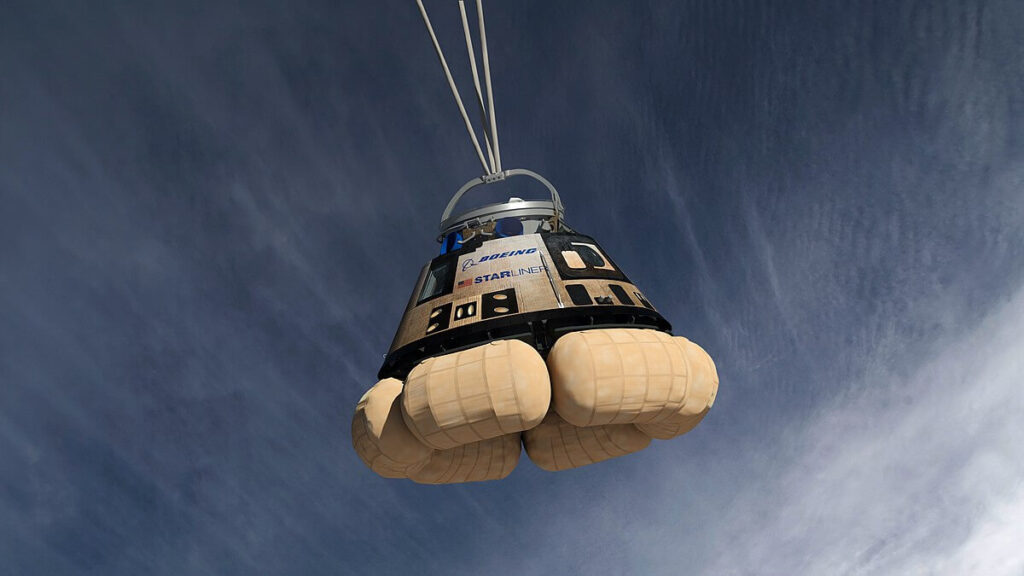A report found that NASA paid Boeing almost $300 million above the prices fixed by the Commercial Crew Program (CCP) contract. The money was meant as a compensation for “additional flexibilities” to accelerate the production of the Starliner capsule. The space agency’s inspector general deemed compensation as unnecessary.
In its final report on the “Management of Crew Transportation to the International Space Station”, published on November 14, 2019, the NASA Office of Inspector General commented on the sum of $287.2 million paid by the agency to Boeing in order to fill an anticipated crew access gap caused by delays – despite those delays being attributable to the manufacturer. “For these four missions, NASA essentially paid Boeing higher prices to address a schedule slippage caused by Boeing’s 13-month delay in completing the ISS Design Certification Review milestone and due to Boeing seeking higher prices than those specified in its fixed price contract,” the report states. By granting this additional sum, NASA exceeds the fixed-price that was agreed on when the contract was awarded to both Boeing and SpaceX.
The Inspector general argues that the payment was “unnecessary”, as it was decided in 2016, at a time when the risk of delays was low. Moreover, other solutions existed to fill this gap. For instance, the agency could have acquired additional seats on the Soyuz launcher.
Since the suspension of the space shuttle program in 2011, NASA relied on Russian partner Roscosmos “Soyuz” system to send astronauts to the International Space Station (ISS) at the cost of approximately $80 million per seat. Interestingly enough, the report mentions that five days after NASA committed to pay the $287.2 million, Boeing offered the agency to sell five Soyuz seats for $373.5 million for the same missions.
SpaceX was also unfairly left out and was not offered an opportunity to address the issue, according to the report. “In our judgment, contacting both providers would have been a prudent approach to maximize the Agency’s options while also ensuring fairness,” it states.
Similarly, it appears that Boeing cost-per-seat exceeds the one offered by SpaceX, with $90 million per seat for the Starliner and $55 million for the Dragon. In total, Boeing services have been evaluated at $4.949 billion (minus the $287.2 million compensation), while its counterpart should only receive $3.153 billion. SpaceX founder and CEO Elon Musk commented on the matter, qualifying the disparity as unfair.
Meaning not fair that Boeing gets so much more for the same thing
— Elon Musk (@elonmusk) November 15, 2019
NASA’s leniency with Boeing may have been motivated by concerns that the manufacturer could abandon the program. “According to several NASA officials, a significant consideration for paying Boeing such a premium was to ensure the contractor continued as a second crew transportation provider,” said the inspector.
Boeing denied any pressure on its part. “Boeing has made significant investments in the commercial crew program, and we are fully committed to flying the CST-100 Starliner and keeping the International Space Station fully crewed and operational”, a spokesperson for the manufacturer told Ars Technica.
In a response dated from November 8, 2019, included in the report, Kenneth Bowerson, NASA’s acting associate administrator for human exploration and operations, contradicts the inspector’s conclusions that the added costs were unnecessary, arguing that there was “no evidence to support the conclusion that Boeing would have agreed to lower prices”. However, NASA’s management concurs with all the recommendations formulated in the report.
In 2014, NASA asked Boeing and SpaceX to build a spacecraft capable of connecting the Earth with the ISS. The two private companies were initially due to take over in 2017. However, they both met delays due to technical problems during testing. At best, the first inhabited flight should take place during the first quarter of 2020. Both vehicles, the Boeing CST-100 Starliner and the SpaceX Dragon are currently undergoing safety tests of their aborted launch systems. With both programs facing delays, the report recommends that NASA works on a contingency plan with Roscosmos to anticipate any capability gap.
Boeing is already under suspicion of collusion with another governmental agency, the Federal Aviation Administration, over the certification of its 737 MAX aircraft that was grounded after two crashes that led to the death of 346 people. At least three investigations by several departments of the United States administration were launched to look into the relationship between the manufacturer and the agency.
